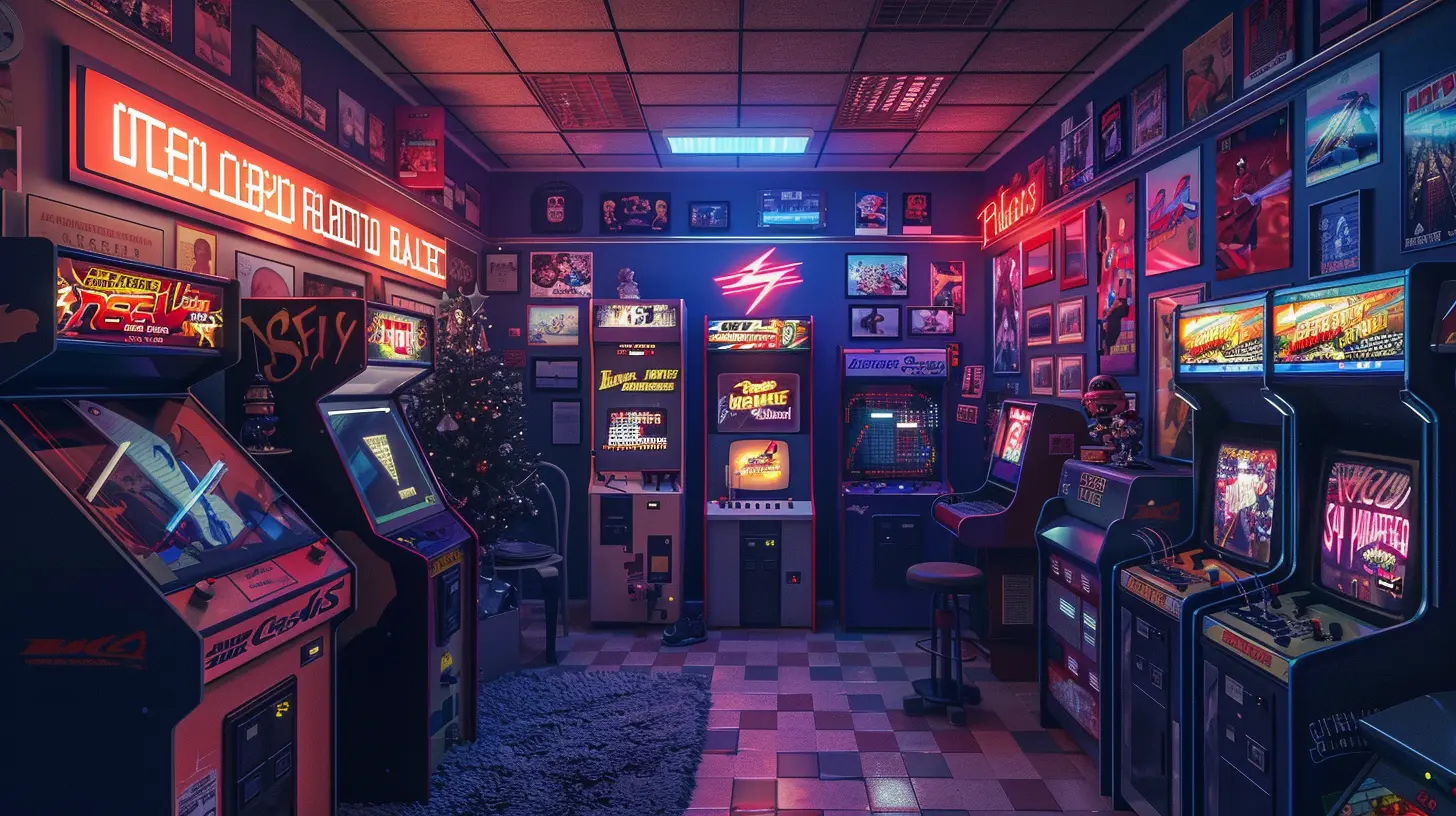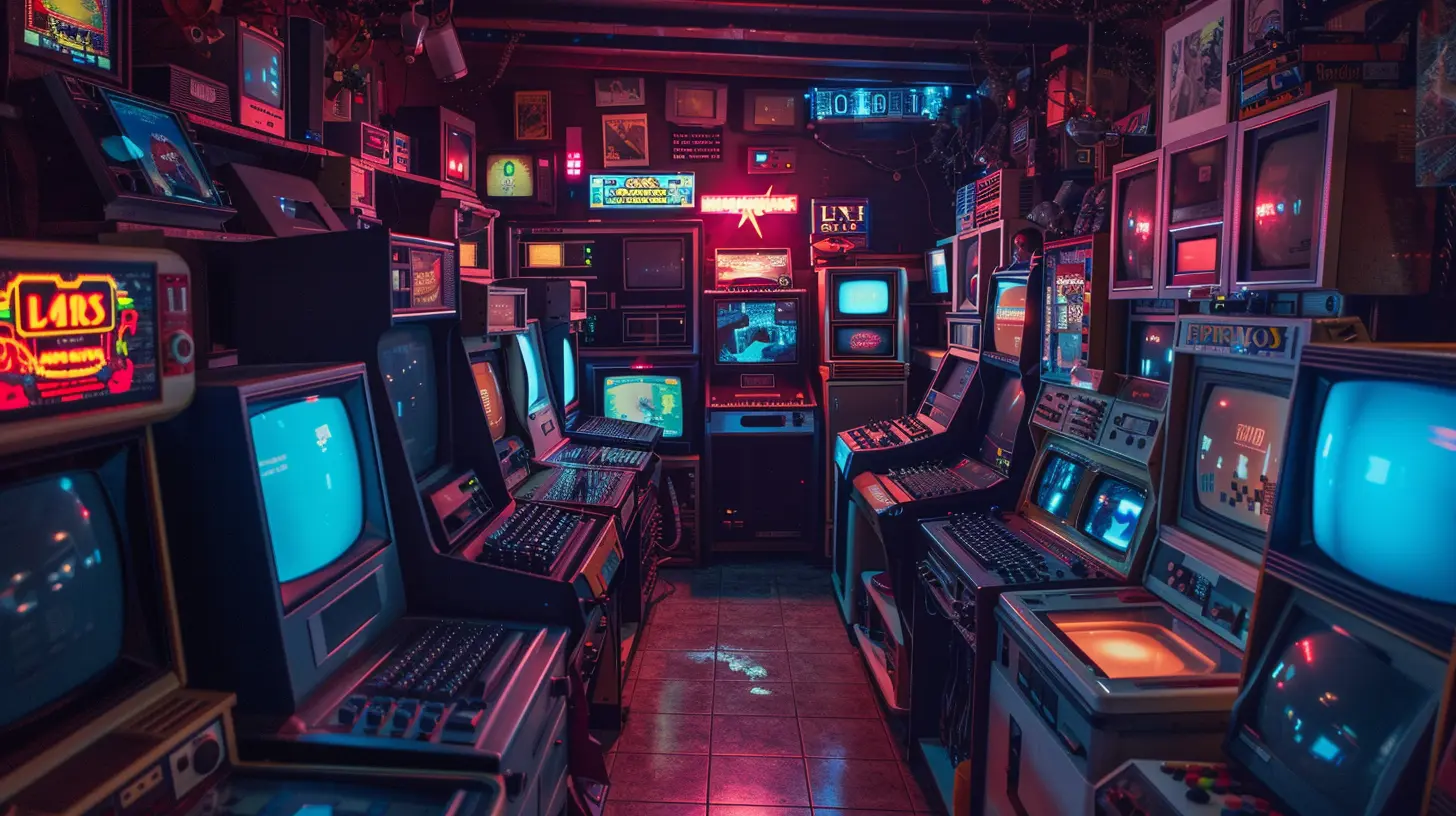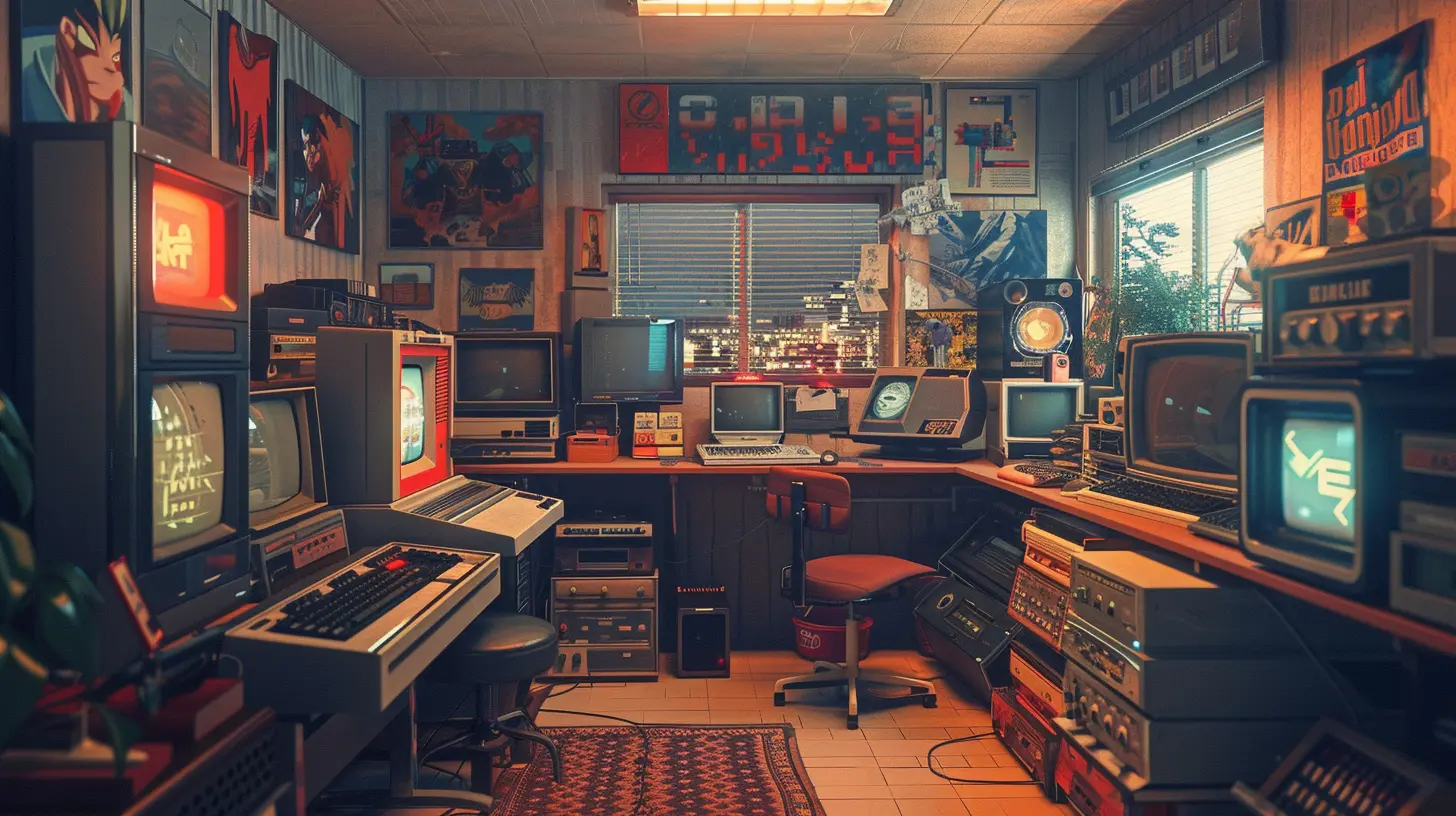Exploring the Retro Aesthetics of ’80s and ’90s Games
3 November 2025
Ah, the ’80s and ’90s — a time when big hair, neon lights, and cassette tapes ruled the world. But for gamers? It was an era of pixel-perfect adventures, cheesy soundtracks, and vibes that just hit differently. Today, retro games from this period aren’t just about nostalgia. They’re a legit art form, a tale of innovation, and a window into how far gaming has come.
So, grab your joystick (or your mouse, I guess) and let’s dive headfirst into the retro aesthetics of ’80s and ’90s games.
What Defines Retro Aesthetics?
Before we get too deep, let’s imagine this: you’re firing up an old NES or Sega Genesis. What greets you? Blocky, pixelated graphics that somehow feel more vibrant than life itself. Chiptune music that, though simple, has been living rent-free in your head for decades. And gameplay that demands precision — because trust me, there’s no "press X to pay respects" here.The retro aesthetic isn’t just about the outdated hardware or old-school limitations. It’s about how developers worked within those constraints to create magic. They didn’t have access to photorealistic engines or 4K textures. They had pixels and a dream. And, honestly? We kind of love them for that.
The Pixelated Canvas: Graphics of the Era
The Art of Pixels
Let’s talk pixels. In today's gaming world, it’s all about realism, shadows, and reflections so detailed you can see your character’s pores. But back in the ’80s and ’90s, every single pixel mattered. Developers treated their screens like digital canvases and painted masterpieces with a limited palette.Games like Super Mario Bros. or The Legend of Zelda didn’t need cutting-edge graphics to feel alive. They used bright, colorful sprites that instantly caught your eye. Remember Mario’s iconic red overalls and blue shirt? That wasn’t just a design choice; it was a necessity. Designers used bold colors to make characters pop on tiny, low-resolution screens.
The limitations of the time fueled creativity. Since they couldn’t rely on graphical fidelity, developers leaned hard into stylized visuals and imaginative designs. For example, Mega Man’s futuristic world or Castlevania’s gothic castles still hold up today because of how distinct and striking they are.
Low Resolution, High Impact
Let’s not forget that these visuals weren’t just created for cool screenshots. They had a purpose. When you’re zooming through loops in Sonic the Hedgehog, the visual clarity ensures the player knows exactly what’s happening, even at breakneck speeds. That’s design genius.
Chiptunes: The Soundtrack of Nostalgia
If pixels were the heart of retro games, chiptunes were the soul. You know what I’m talking about — those bleep-bloop melodies that stay stuck in your brain for eternity. From the cheerful jingles of Mario to the intense tracks of Contra, game soundtracks weren’t just background noise. They were part of the experience.Here’s the kicker: these tunes were created using super basic audio chips. Developers could only use a handful of sound channels at a time, which meant they had to prioritize melody over complexity. Turns out, less is more.
Even now, gamers reminisce about tracks like Tetris’s "Korobeiniki" theme or Final Fantasy’s victory fanfare. Why? Because they weren’t just noise — they were iconic, catchy, and ridiculously memorable. It’s like comparing a simple acoustic guitar to an overproduced electronic symphony. Sometimes, simplicity wins.
Gameplay Mechanics: Brutal, Yet Fair
Now, let’s talk gameplay. If you’re from the retro era, you’ve probably heard the phrase: "Nintendo-hard." Games back then didn’t hold your hand. No tutorials, no fancy checkpoints, no auto-saves. You had to figure things out on your own. And yeah, it was frustrating. But looking back? It was so rewarding.The Skill Factor
Take Contra, for example. This run-and-gun classic didn’t give you room for mistakes. You had limited lives, brutal enemies, and no time for excuses. But boy, when you made it through? You felt like a gaming god. These games were tough, sure, but they weren’t impossible. They encouraged players to try, fail, and learn. It was like the Dark Souls of its time — except with way more pixels.Simplicity is Key
Retro gameplay mechanics were also simple but addictive. Think about Tetris. All you had to do was stack blocks and clear lines. Easy, right? Except it’s not. The longer you play, the faster it gets, until you’re in full panic mode, yelling at the screen. These games were deceptively simple yet insanely engaging.And let’s not even get started on couch multiplayer. Back then, local multiplayer was THE thing. Whether it was racing against friends in Mario Kart 64 or throwing shells in Super Smash Bros., the energy was unmatched. No toxic chatrooms, no lag — just a bunch of people on a couch, yelling and laughing.
Storytelling Through Simplicity
Sure, the graphics and gameplay were important, but storytelling got a surprising amount of love too. In an era where hardware couldn’t handle long cutscenes or dialogue-heavy scripts, developers found creative ways to tell compelling stories with minimal resources.Take The Legend of Zelda: A Link to the Past. It used subtle hints, environmental cues, and cryptic NPC dialogue to immerse players in its world. Even Super Metroid told an emotionally resonant story — entirely without dialogue! Can modern games do that? Rarely.
These minimalist storytelling tactics left a lot to the imagination. And in a way, that made the worlds feel even bigger. You weren’t spoon-fed lore; you pieced it together yourself. It wasn’t just a game — it was your adventure.
Why Retro Aesthetics Still Resonate Today
Here’s the million-dollar question: why, in an era of ray tracing and VR headsets, are we still obsessed with retro gaming aesthetics? Well, for starters, they’re timeless. Pixel art and chiptune music have a charm that doesn’t age. Meanwhile, hyper-realistic graphics from the early 2000s? They look like someone faceplanted into the uncanny valley.Indie Games: Keeping the Retro Spirit Alive
Indie studios have been instrumental in keeping the retro aesthetic alive. Games like Stardew Valley, Celeste, and Undertale borrow heavily from the styles of the ’80s and ’90s. And honestly? Players eat it up. These games prove that you don’t need cutting-edge graphics to create a masterpiece. Sometimes, all you need is a compelling story, tight gameplay mechanics, and a dash of nostalgia.A Connection to Simpler Times
Let’s face it: modern gaming can feel… overwhelming. With microtransactions, battle passes, and day-one patches, it’s easy to feel burnt out. Retro games? They’re pure. Just you, the game, and maybe some snack crumbs on your controller. Playing these games brings us back to a simpler time when gaming was about fun, not FOMO.Closing Thoughts: The Beauty of Retro Aesthetics
The retro aesthetics of the ’80s and ’90s are more than just a nostalgic trip down memory lane. They’re a testament to the creativity and ingenuity of developers who pushed the limits of technology to create unforgettable experiences. Whether it’s the pixelated treasure troves, the chiptune anthems, or the tough-but-fair gameplay, these games continue to inspire and influence the gaming world today.So, next time you’re scrolling through your game library, consider booting up a retro classic. You might just find that pixelated nostalgia is exactly what you need.
all images in this post were generated using AI tools
Category:
Gaming HistoryAuthor:

Brianna Reyes
Discussion
rate this article
1 comments
Colin McKenzie
Uncover the hidden whispers of pixels long forgotten and their secrets.
November 6, 2025 at 5:24 AM

Brianna Reyes
Absolutely! The charm of retro games lies in those pixelated stories waiting to be rediscovered.


